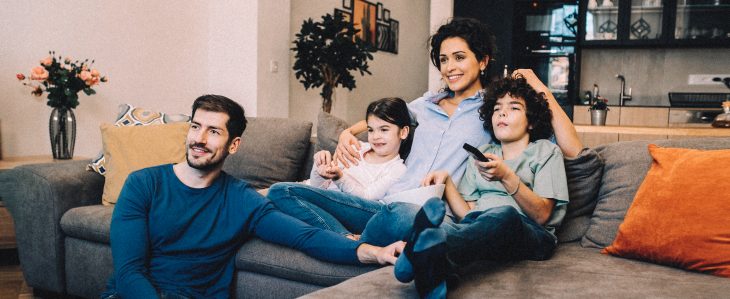The COVID-19 pandemic transformed spending behaviors overnight. Here are some post-lockdown smart savings tips to take from quarantine.
No doubt about it, the COVID-19 pandemic disrupted just about every aspect of our lives. Along with health challenges, it ushered in major financial changes. Nearly half of U.S. adults, for example, experienced a hit to their income due to the pandemic, Bankrate reports. This led many living in quarantine to think differently about how to create better spending habits and how to focus on saving.
When you come out of lockdown, some financial experts suggest identifying quarantine money lessons and turning them into long-term financial habits. As life slowly returns to normal and the old temptations to spend money re-emerge, you’ll be able to lean on the money insights you realized during the pandemic.
So, what did quarantine teach us about personal finance?

As you think about how to create better spending habits for yourself, experts suggest taking the following quarantine money lessons and applying them to your life going forward:
Lesson #1: You can live with less than you thought
One quarantine money lesson you probably learned: While some items are essential, many are not.
“If you’re familiar with Maslow’s hierarchy of needs, the first level of that is physiological needs, like food, water and shelter,” says Bill Boggs, a financial advisor. “So, at the beginning of the pandemic, people just automatically dove in and suddenly toilet paper and bottled water were the new gold. There’s just something about the basic physiological need to take care of yourself, and everyone instinctually focused on that.”
After stocking up on essentials, two main factors drove financial decisions during lockdown: employment status and access to goods and services.
“Some people have had to trim expenses to adjust for a decrease in income,” says Deacon Hayes, president of personal finance blog Wellkeptwallet.com.

Many people also found they weren’t spending the same way they were before. “Something like going out to eat or going to the gym is less available than it used to be,” Hayes says. “So, people have been forced to make some adjustments.”
To understand how this quarantine money lesson applies to you, take a look at your bank account to see how your spending habits were impacted by the lockdown. As you review, ask yourself:
- Did you spend more or less in quarantine than you did before?
- How did your spending priorities shift during quarantine?
- Did you cut any expenses in quarantine that you didn’t miss?
To help create better spending habits, Boggs and Hayes recommend categorizing your expenses as either essential or non-essential during this review. If you find you’ve been able to get by without some non-essential expenses (maybe you’ve ditched a streaming service or put your personal training sessions on ice during the lockdown), you might consider permanently eliminating them.

To do this, create a new budget or update your existing one to account for the expenses you actually need.
For first-time budgeters getting started post-lockdown, Hayes suggests you try the envelope budget. Using this strategy, you give each of your spending categories a monthly limit by putting cash inside of an envelope. Once that money is gone, you don’t spend more on that category until the following month. If you don’t often carry cash, digital tools can help you create better spending habits by allowing you to assign a monthly budget to different digital “envelopes.”
“It’s going to put boundaries around your spending,” Hayes says, “so you stay on track to achieve your goals and don’t say, ‘Hey, where’d all the money go?’”
Once you make a habit of sticking to your budget, you can see how this quarantine money lesson can inform long-term behaviors. For example, you might continue eating at home more often than you eat out. Or you might continue working out in your living room instead of paying for your gym membership as a way to get fit on a budget.
Lesson #2: You can save more if you pay off debt
After taking a closer look at their finances, many people also wised up to another quarantine money lesson: Relying too heavily on debt can hamper your ability to save.
As businesses shut down and some people lost their incomes as a result of the pandemic, existing debt—whether from credit cards or loans—went from just another monthly payment to a financial hurdle, Hayes says. On top of that, financial experts observed more people using their credit cards to pay for essential needs because of their reduced incomes.
“A lot of people are realizing that they’re paying a lot of money on interest or debt, whereas if they didn’t have that debt, they could potentially save it or spend it on other things,” Boggs says.
If you’re in a situation where you’re paying a lot in interest every month, a smart savings tip to consider post-quarantine is to make a plan to pay off debt.
Start by taking stock of how much debt you currently have. Make sure to consider credit cards and loans. Then determine your timeline for paying off your debt. If you decide on a six-month goal, for example, calculate how much you will need to pay monthly to achieve that goal.
From there, identify areas in your budget where you can cut back to help stay on schedule. It can be helpful to focus on the expenses you identified as non-essential as part of quarantine money lesson #1.
Once you tackle your debt, you can focus more on saving for your financial goals.
Lesson #3: Saving can be easier when it’s automated
The truth is, saving isn’t always as easy as it sounds.
If you saved more during quarantine with your go-to places closed and less temptation to spend on discretionary expenses, this next quarantine money lesson is for you: Automating your savings is a simple, stress-free way to turn saving money into a long-term habit.
“Automatic saving is a way to take control and set yourself up for success,” Boggs says. “People don’t think about it until they check their balance on the website, and they realize how much they have saved.”
Think of automation as a way to create better spending habits by reducing the spending temptation that naturally dissipated when the economy was shut down. By automatically saving a portion of your paycheck every month, you’ll be less tempted to spend the cash on non-essentials, and you’ll learn to cover your expenses without it.
To bring savings automation into a post-quarantine world, start by taking a look at your budget to determine how much you can sock away each month, Hayes says.
Next, set up a monthly automatic transfer for that amount from your checking account to a high-yield savings account. Putting your money into a high-yield savings account is a smart savings tip because you’ll earn interest on the amount you deposit, which will help your money grow.
It may be helpful to think about this like you’re paying another bill. With automation by your side, you can keep your good quarantine money habits going—without even trying.
Lesson #4: Keep your long-term savings goals in mind
The economic uncertainty caused by the pandemic helped many people realize the importance of saving for big life goals, even if those goals feel a long way off.
Hayes says, “We have to look beyond [the pandemic] and say, ‘What are my financial goals? When do I want to retire? Am I going to pay for my kids’ college?’”

Both Boggs and Hayes agree the pandemic could have a lasting impact that drives people to plan more intentionally for their long-term financial goals.
“There are some people who are shaken right now,” Hayes says. “They’re saying, ‘Okay, I still have a job, but I need to get serious about my finances. Maybe I should be setting aside money for my kids’ college because I haven’t been doing that.’”
Take this quarantine money lesson with you by planning for the financial goals that you value the most.
Consider the example of planning a vacation, a common medium- or long-term financial goal, Hayes says. When you feel it’s safe to travel, remain vigilant about paying for vacations with money you’ve saved up for the occasion, and resist the urge to put vacation expenses on your credit card.
To apply this goal-setting mindset, figure out how much your trip will cost, and then set a monthly savings goal that will help you save that amount by the time you leave. And with this quarantine money lesson in mind, start saving at least several months in advance to make sure you have enough money to pay for your trip without dipping into funds that you would need if another unexpected crisis were to hit.
By using smart savings tips that you learned in quarantine (hint: automate those savings), your long-term financial goals will feel more in reach.
Prepare for the road ahead with these smart savings tips
As you adjust to your current reality and look toward the future, now is the perfect time to reflect on your quarantine money lessons. Be patient with yourself: Taking charge of your finances may feel a little intimidating at first. That’s natural, Boggs says.
“Facing your budget realities can be humbling,” Boggs says. “Many people know that they are over-spending, and they don’t face it because they are afraid of the sacrifices that they may have to make.”
But here’s the thing: Your journey starts with just taking the first step. “Once you decide you want to take control of your finances and make sure you know where your money is going, that is actually empowering,” Boggs says.
With these smart savings tips, you can keep your hands firmly on the steering wheel of your spending, saving and financial future well after quarantines and lockdowns are in the rearview mirror.
Motivated to plan for your long-term financial goals? Learn how to protect your retirement savings from a recession while supporting your family.
